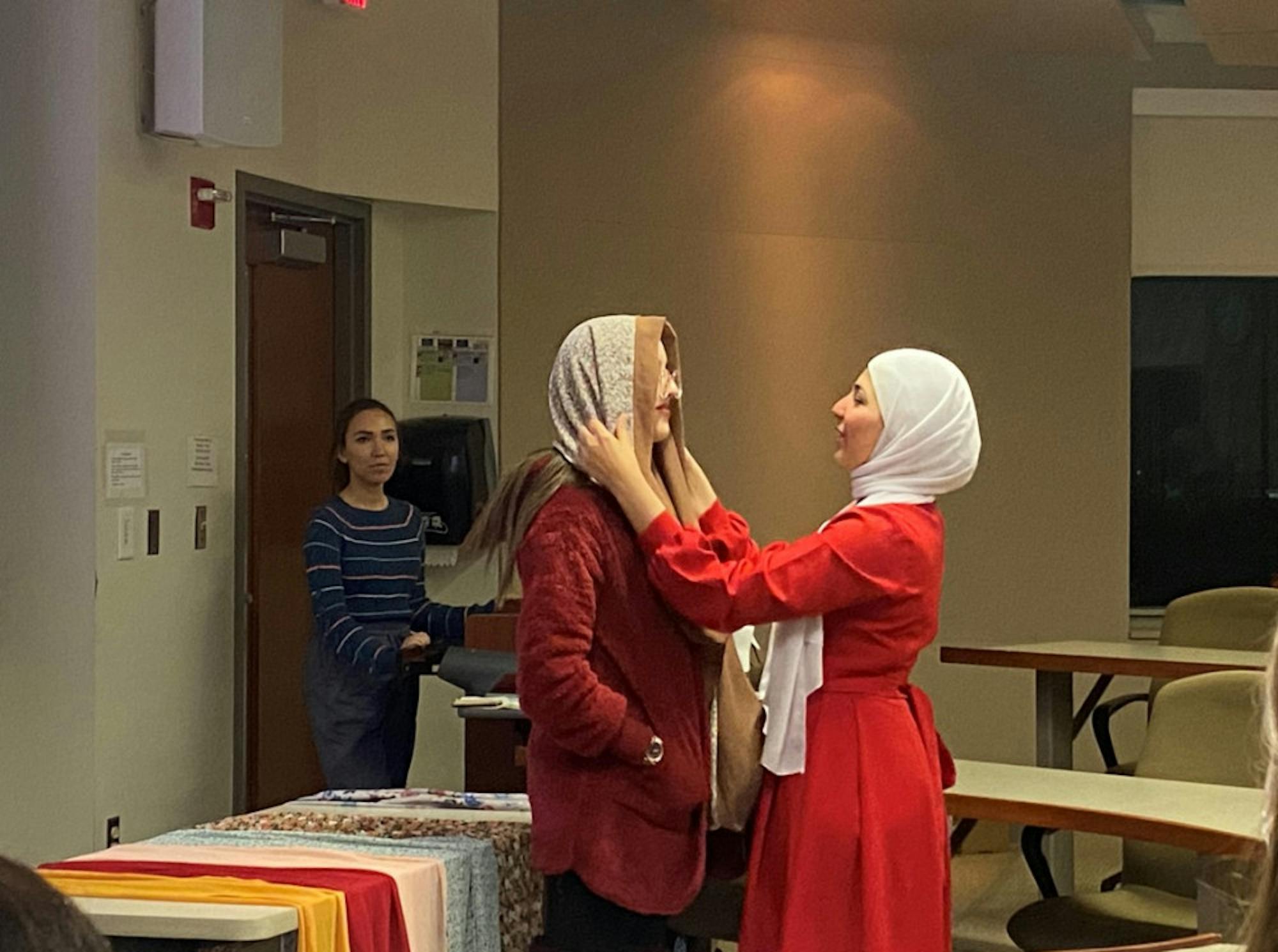Hagar Hodeeb, a Fulbright language teaching assistant from Egypt, delivered a lecture about women and the hijab in the Arab world on Wednesday afternoon in the Spes Unica building at Saint Mary’s.
Editor’s Note: Hodeeb is a photographer for The Observer.
Hodeeb set out to educate her audience on what the hijab means to Muslim women and clear up any misinterpretations of its purpose.
“I particularly chose this topic because I notice that I’m pretty much the only one wearing a hijab around the campus,” Hodeeb said.
The lecture then delved into the topic, featuring dual perspectives of religion and culture.
Hodeeb explained that as a Muslim, she must follow a list of criteria in wearing her hijab — the veil must be worn loosely and should not call attention to oneself — but there is no single type of clothing women must wear. Wearing a hijab is almost entirely personal and heavily influenced by culture, she said.
Why women wear hijabs
“Why are we wearing a hijab? Well, the answers are deeply personal, and it will vary from person to person,” Hodeeb said.For Hodeeb, wearing a hijab is an expression of love to God.
“It’s a way of obeying God’s orders, who commanded that both men and women live in modesty,” Hodeeb said. “If I take it off, I feel like there’s something missing with me.”
Hodeeb emphasized that a woman wearing a hijab does not mean she is being oppressed — in fact, it can often be an expression of power.
“Sometimes, to the demands of exposure, women wear it as if to say, ‘I’m all covered up, but I’m still beautiful,’” Hodeeb said.
Hijabs also do not stop a woman from being fashionable, Hodeeb added.
“There are a lot of fashion lines for hijab, and I personally got some compliments on my outfits,” she said with a laugh.
Hodeeb did, however, acknowledge instances of female oppression in the Arab world.
“We can’t ignore the cases in which there are authoritarian male figures forcing women to do things they don’t want,” she said. “But I can tell you that the religion never encourages something like this, and rather promotes respecting women.”
Highlighting different voices
Hodeeb then invited two Muslim students from the audience to stand up and share their own decisions regarding the hijab.The two students were Selma El Aouli, an exchange student from Morocco at Saint Mary’s for her senior year, and Haleemah Ahmad, a graduate student from Nigeria in Notre Dame’s Master of Global Affairs program.
Despite having deeply thought-out reasons behind their choices to wear a hijab, they all voiced understanding in each others’ ability to choose for themselves based on personal experiences.
“I shouldn’t judge her — I don’t know what she has been through,” Hodeeb said of the many different choices hijabis make.
El Aouli, who does not wear a hijab, explained that even though she doesn’t wear one, she takes her faith very seriously.
“I’m attached to my religion, and I know a lot about it,” she said.
Regarding the hijab, El Aouli said she needs to do more research on it before she starts wearing one.
“For me, it’s just not the right time,” she added.

Ahmad, dressed in an orange khimar, explained that she started wearing a hijab when she converted to Islam.
“When I accepted Islam, I accepted it as a complete package,” she said.
In secondary school, Ahmad said, she couldn’t wear a hijab with her uniform, and her parents didn’t want her to.
“I had to fight to be allowed to wear my hijab because I believed it was part of my faith,” she said.
After the two women spoke, Hodeeb displayed a video of friends of hers from Egypt, who also explained their personal stories of what the hijab meant to them.
To finish her presentation, she brought El Aouli back up to the front of room again to demonstrate the many ways in which a hijab can be worn. As she finished putting the hijab on El Aouli, an audience member shouted out, “You look beautiful, Selma!”













